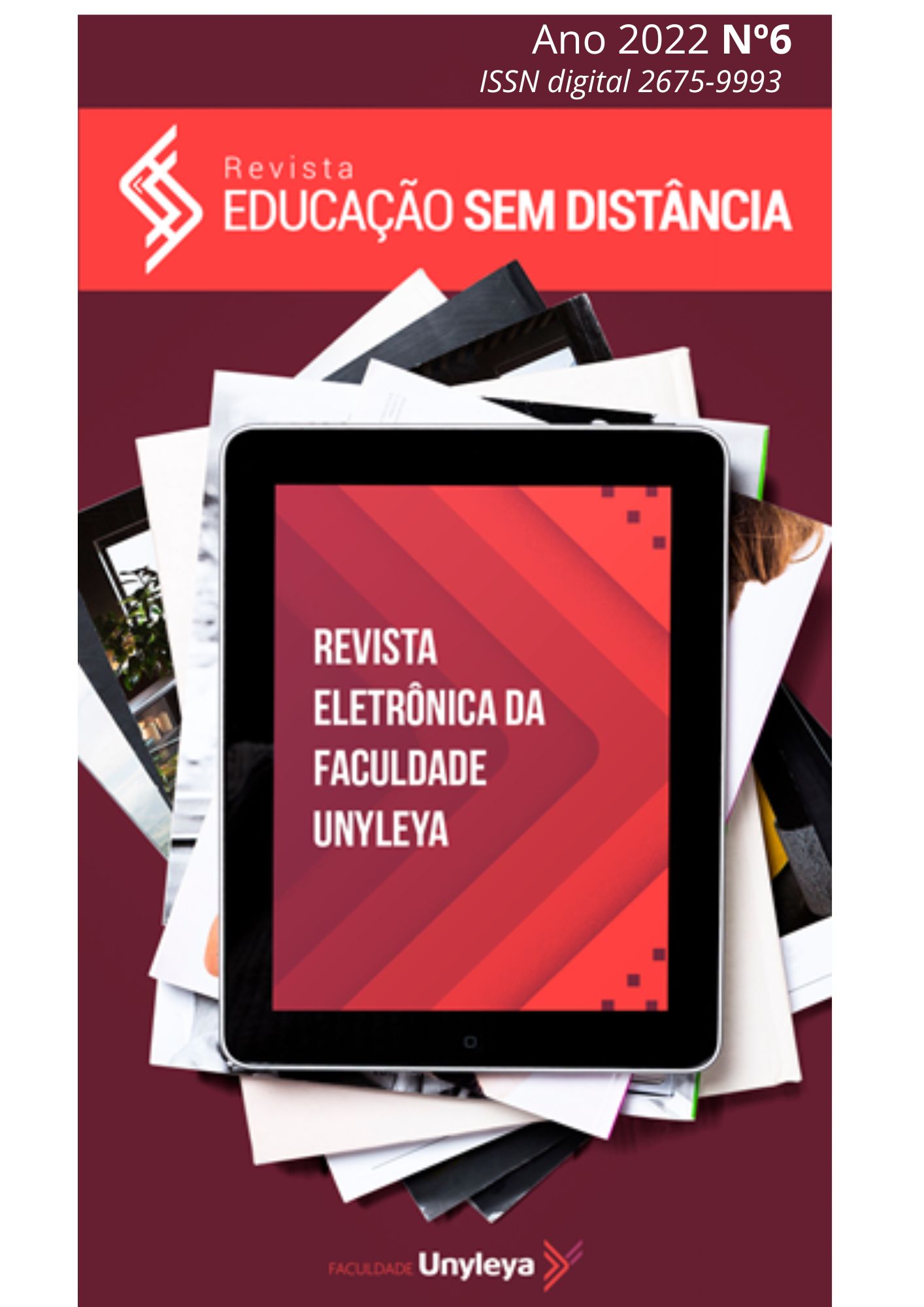DANCE IN HISTORY CLASSES: TEACHING RESOURCE
THE DANCE IN HISTORY CLASSES: TEACHING RESOURCE
Keywords:
Neuropedagogy;, Didatic, Didatic Resource, Memory;, DanceAbstract
This work aims to discuss the role of dance as a resource teaching in History classes. It describes dance, as an element of art, one of the motivating elements for cognitive development, identity formation and citizenship through critical thinking, in addition to improving basic skills of interactions and inclusions with the world, favoring as a pedagogical practice the construction of knowledge and the effectiveness of teaching and learning associated with the bodily experiences. Questionnaires were used for students from schools public and private, the result of the work carried out at the Faculty in the disciplineEducational Projects and Practices IV, in addition to several scientific articles from renowned neuropedagogues and neuroscientists in the area Through the development of the present study, it was possible to observe that the students want to more dynamic in the classroom for learning.
References
BATISTA, Nayara Carmem. A dança e a sua importância no ambiente escolar. (Acessado em 20 de janeiro de 2022). Disponível em https://www.webartigos.com/artigos/a-danca-e-sua-importancia-no-ambiente escolar/72225
COSTA, Laís Renó Stábile. Et al. O papel do professor na aprendizagem da criança: uma discussão a partir das compreensões de Vygotsky e Piaget. Revista Científica Multidisciplinar Núcleo do Conhecimento. Ano 04, Ed. 01, Vol. 07, pp. 18-26 janeiro de 2019. ISSN: 2448-0959 (Acessado em 20 de janeiro de 2022)
DA SILVA, Gerlane Paleta. A contribuição da dança para o desenvolvimento inteligência emocional no espaço escolar. (Acessado em 10 de fevereiro de 2022). Disponível em 16 file:///C:/Users/PC%20HOME/Downloads/A%20contribui%C3%A7%C3%A3o%20da %20dan%C3%A7a%20para%20o%20desenvolvimento%20da%20intelig%C3%AAnc ia%20emocional%20no%20espa%C3%A7o%20escolar%20(3).pdf
FONSECA, Vitor da. Importância das emoções na aprendizagem: uma abordagem neuropsicopedagógica. Rev. psicopedag., São Paulo , v. 33, n. 102, p.365- 384,2016.Disponível emhttp://pepsic.bvsalud.org/scielo.php?script=sci_arttext&pid=S0103- 84862016000300014&lng=pt&nrm=iso>. acessos em 24 jan. 2022.
MAGUIRE, M. J. Music and epilepsy: A critical review, Department of Neurology, United Kingdom. Mar, 2012. (Acessado em 20 de janeiro de 2022). Disponível em http://onlinelibrary.wiley.com/doi/10.1111/j.1528-1167.2012.03523.x/pdf
MALLMAAN, M.L.C; BARRETO, S. J. A dança e seus efeitos no desenvolvimento das inteligências múltiplas da criança. (Acessado em 10 de fevereiro de 2022). Disponível em file:///C:/Users/PC%20HOME/Downloads/danca_intelig%20(1).pdf.
MOURÃO Junior, Carlos Alberto e Melo, Luciene Bandeira Rodrigues Integração de três conceitos: função executiva, memória de trabalho e aprendizado. Psicologia: Teoria e Pesquisa [online]. 2011, v. 27, n. 3 [Acessado 20 de janeiro de 2022] , pp. 309-314. Disponível em: . Epub 30 Set 2011. ISSN 1806-3446. https://doi.org/10.1590/S0102- 37722011000300006.
SILVA, Gabriel Gomes de Souza; MACIEL, Cilene Maria Lima Antunes; FERNANDES, Cleonice Terezinha; FONTES, Tania Aparecida de Oliveira. As contribuições da dança (do ventre) no ensino-aprendizagem para crianças: uma óptica neurocientífica. Revista Educação Pública, v. 20, nº 4, 28 de janeiro de 2020. (Acessado em 24 de janeiro de 2022).Disponível em: https://educacaopublica.cecierj.edu.br/artigos/20/4/as-contribuicoes-da-danca-do ventre-no-ensino-aprendizagem-para-criancas-uma-optica-neurocientifica
Site Pensador.com – 395 Pensamentos de Victor Hugo. (Acessado em 21 de março de 2022). Disponível em: Victor Hugo - Pensador
Downloads
Published
How to Cite
Issue
Section
License
Copyright (c) 2022 Educação Sem Distância - Revista Eletrônica da Faculdade Unyleya -e-ISSN 2675-9993

This work is licensed under a Creative Commons Attribution 4.0 International License.
A Revista Educação Sem Distância publica trabalhos que se enquadram em sua linha editorial, voltados para pesquisas, inovações, práticas pedagógicas e profissionais e projetos de extensão que dialoguem com a Educação a Distância (EaD) e com os Objetivos de Desenvolvimento Sustentável (ODS).
As submissões devem estar em conformidade com as normas éticas de publicação, respeitar os direitos autorais e seguir rigorosamente as normas da ABNT indicadas nas diretrizes para autores. O processo de avaliação é realizado em sistema de revisão por pares duplo-cego, garantindo isenção e qualidade acadêmica.
Os conceitos e ideias expressos nos trabalhos publicados são de responsabilidade exclusiva de seus autores, não representando necessariamente a posição da revista ou da instituição mantenedora.
Todos os trabalhos aceitos para publicação são disponibilizados em acesso aberto e licenciados sob a Creative Commons Attribution 4.0 International (CC BY 4.0), permitindo uso, compartilhamento e adaptação do conteúdo, desde que citados corretamente os autores e a revista.



